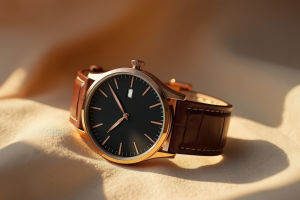Are you curious about how professional makeup artists achieve such smooth and flawless results? The secret often lies not just in the products used, but in the tools applied—specifically makeup brushes.
These simple yet powerful tools can elevate your makeup routine, giving you a polished, natural, and long-lasting look. Let's explore why makeup brushes are essential and how to use them for the best results.
Why Makeup Brushes Matter
Makeup brushes are designed to distribute product evenly, blend seamlessly, and enhance precision. Using your fingers or sponges alone can sometimes lead to uneven application, streaks, or cakey buildup. Brushes help create a smooth finish by picking up just the right amount of product and placing it exactly where it's needed.
Experts agree that brushes allow for better control and versatility. For example, a dense foundation brush can offer full coverage, while a fluffy powder brush provides a light, natural dusting. This range lets you customize your makeup according to the desired effect.
Types of Brushes and Their Purposes
Understanding the function of each brush is key to mastering flawless makeup. Here are some essential types:
• Foundation Brush: Usually dense with flat or slightly rounded bristles, perfect for buffing liquid or cream foundations for a smooth base.
• Concealer Brush: Smaller and tapered, ideal for precise coverage around the eyes and nose.
• Powder Brush: Large and fluffy, used to apply setting powders lightly and evenly.
• Blush Brush: Medium-sized and slightly angled, designed to apply blush naturally along the cheekbones.
• Eyeshadow Brushes: Available in many shapes—flat brushes for packing color, fluffy ones for blending edges, and angled brushes for eyeliner or brows.
Using the right brush for each product ensures the best finish and prevents over-application or patchiness.
How to Use Brushes for Flawless Application
The technique is just as important as the tools. When applying foundation with a brush, use small circular motions or gentle stippling to blend product into the skin. This method builds coverage gradually and avoids streaks.
For powders and blushes, light sweeping or tapping motions help distribute the product evenly. When working with eyeshadows, start with light layers and blend edges softly using a fluffy brush to avoid harsh lines.
It's also helpful to clean your brushes regularly. Dirty brushes can harbor bacteria, cause breakouts, and affect color payoff. Experts recommend washing brushes with gentle soap or brush cleaners at least once a week, drying them flat to keep their shape intact.
The Benefits of Synthetic vs. Natural Bristles
Makeup brushes generally come with either synthetic or natural hair bristles. Synthetic brushes are made from man-made fibers like nylon or polyester and tend to work best with liquid or cream products since they don't absorb as much product.
Natural bristle brushes, made from animal hair, are often preferred for powders because of their ability to pick up and distribute pigment smoothly. However, synthetic brushes have improved greatly and are now a favorite among many artists for their durability and ease of cleaning.
Choosing brushes that suit your product types and preferences will make your application easier and your results more professional.
Investing in Quality Brushes Pays Off
While there are affordable options, investing in high-quality brushes can transform your makeup experience. Well-crafted brushes have denser, softer bristles that hold product better and glide smoothly over the skin.
Quality brushes also last longer if properly cared for, making them a worthwhile investment. Many makeup professionals emphasize that tools are as important as the products themselves for achieving a flawless look.
Additional Tools to Complement Brushes
Along with brushes, consider integrating other tools like beauty sponges, which can be great for blending foundation and concealer for a natural finish. However, sponges often absorb more product, so brushes are generally more efficient.
Makeup brush sets are also convenient for beginners, providing all the basics in one package. As you get more comfortable, you can add specialty brushes to address specific needs, like contouring or detailed eye makeup.
Tips for Maintaining Your Brushes
To keep your brushes performing at their best, regular maintenance is crucial. Avoid harsh detergents; instead, use mild soap or specialized brush cleansers. After washing, reshape the bristles and let them dry naturally on a flat surface.
Never store brushes upright when wet, as water can seep into the ferrule (the metal part), loosening the glue and shedding bristles. Proper care extends brush life and keeps your application hygienic.
Final Thoughts: Your Makeup, Your Tools
Makeup brushes are more than just accessories—they are essential tools that can make or break your look. Whether you want a natural glow, full coverage, or creative artistry, the right brushes and proper techniques will help you achieve stunning results every time.
Now I'd love to hear from you: which makeup brush has changed your routine the most? Or if you're new to brushes, what questions do you have? Let's talk about how to make these tools work best for you!


